Adding a beautiful pergola to your outdoor space can create a relaxing haven right in your backyard. Pergolas provide shade, with elegance. Transforming your outdoor living area into a higher class.
Planning your budget and prioritizing safety are the final keys to success. With proper preparation, you can avoid common pitfalls and enjoy your new outdoor structure for years to come.
Key Takeaways
- Understand the purpose and design of your pergola
- Ensure compliance with local building codes and permits
- Prioritize budget planning and safety measures
Tip 1: Determine the Purpose and Design
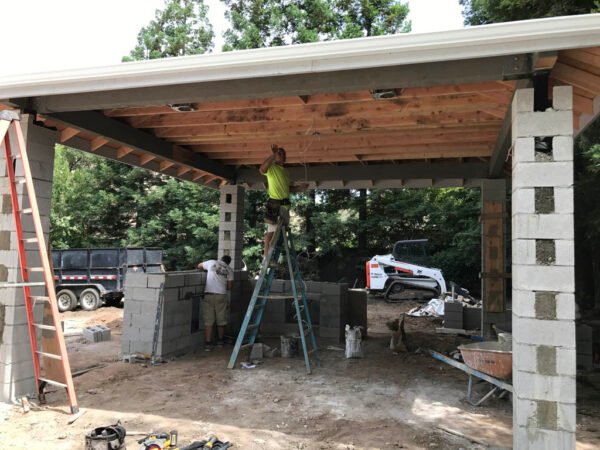
First, identify the primary purpose of your pergola. Are you looking to create shade, a dining area, or enhance your garden’s aesthetic?
Design Considerations
Next, consider the different styles and materials available. Common pergola materials include:
- Wood: Offers a natural look, such as cedar or redwood.
- Aluminum: Durable and low-maintenance.
- Vinyl: Resistant to rot and insects.
Choose materials that suit your local climate, home style, and budget.
Matching Your Home’s Aesthetic
It’s important to select a design that complements your home’s aesthetic. Pergolas come in various styles, from modern to rustic.
Sketch Ideas
Lastly, sketch your ideas or use design software such as SketchUp. This helps in visualizing the placement, size, and overall look of the pergola in your backyard. You can experiment with different designs and make adjustments before starting the construction process.
Tip 2: Check Local Building Codes and Permits

Before starting your pergola project, it’s essential to know your local building codes and obtain the necessary permits.
Research Requirements: Begin by understanding the regulations in your area. These codes are there to ensure that your pergola is safe and up to standards.
Consult with Authorities: Contacting your local building authorities can help clarify any questions you have. They can provide you with the exact requirements and necessary steps to follow.
Potential Restrictions: There may be restrictions on the height, size, and placement of your pergola. For example:
- Height: Maximum allowed height could be limited to avoid interference with power lines.
- Size: Regulations may cap the total square footage.
- Placement: Setback rules might dictate how far the structure needs to be from property lines.
Tip 3: Choose the Right Location
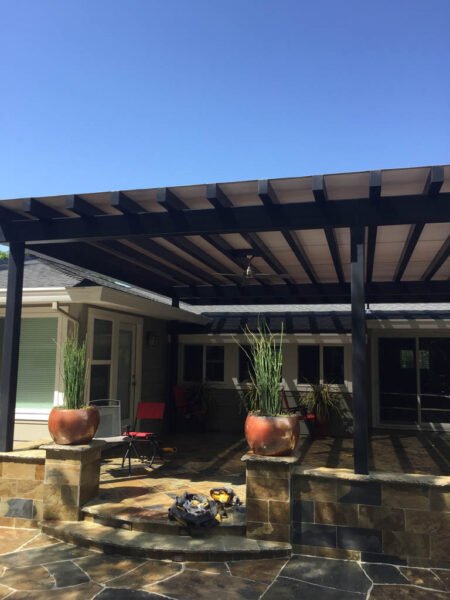
Selecting the optimal spot for your pergola is one of the most important parts. Start by considering sun exposure. Pergolas are most effective when they provide shade in high-sun areas. Observe your yard at different times of the day to identify these spots.
Wind direction is another important factor. Choose a location sheltered from strong winds to ensure stability and comfort. Trees or existing structures can act as natural windbreaks.
Next, think about the proximity to your house. A pergola close to your home extends your living space and makes it easier to use. If it’s too far away, you might not use it as often.
Tip 4: Select Materials and Tools
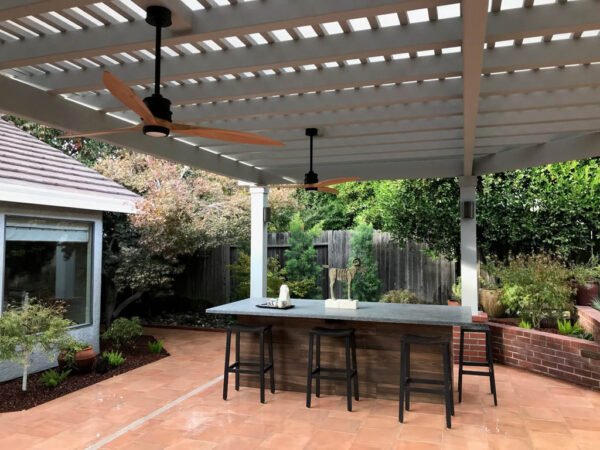
Choosing the right materials and tools is important for building a pergola that withstands time and the elements.
Material Options
Wood:
- Pros: Wood is a classic choice, offering a natural look that blends well with outdoor environments. It is versatile and can be stained or painted.
- Cons: Requires regular maintenance to prevent rot, insect damage, and warping. Treated wood can help improve durability.
Vinyl:
- Pros: Vinyl is low-maintenance and resistant to rot and insects. It also comes in various colors and styles.
- Cons: Can be more expensive than wood. It might not offer the same natural appearance that wood does.
Metal:
- Pros: Metal pergolas are extremely durable and require less maintenance. They are resistant to weather and pests.
- Cons: Can be more expensive upfront. Metal can also get very hot in direct sunlight.
Tools and Equipment
When building a pergola, having the right tools makes the job easier and ensures a strong structure. Here are some essential tools:
- Saws: Circular saw or miter saw for cutting lumber to size.
- Drills: Power drill for making holes and driving screws.
- Level: Ensures all parts of the pergola are even and properly aligned.
- Tape Measure: For precise measurements.
- Hammer: Useful for nails and other adjustments.
- Screws and Bolts: For securing beams and posts.
- Safety Gear: Gloves, goggles, and ear protection for safety.
Tip 5: Plan Your Budget
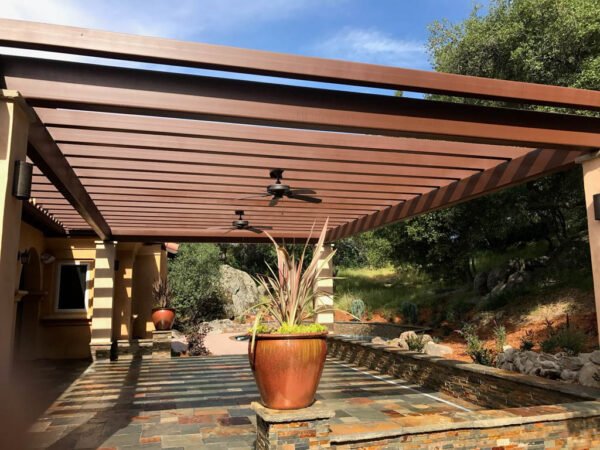
Planning your budget is crucial when building a pergola. It helps you manage costs and avoid financial surprises. Start by listing the major expenses.
Cost Estimation
| Expense | Description |
|---|---|
| Materials | Wood, aluminum, hardware, etc. |
| Tools | Saw, drill, post hole digger, etc. |
| Permits | Building permits from local authorities |
| Labor | Costs for hiring professionals (if needed) |
Budgeting Tips
- Shop Around: Compare prices at different stores to get the best deals.
- Buy in Bulk: Purchasing materials in larger quantities can save you money.
- Do It Yourself: If you have the skills, consider doing some or all of the work yourself.
Contingency Fund
It’s wise to set aside extra funds for unexpected expenses. Aim for about 10-15% of your total budget. This can cover unexpected costs like additional materials or unforeseen repairs.
Tip 6: Safety First
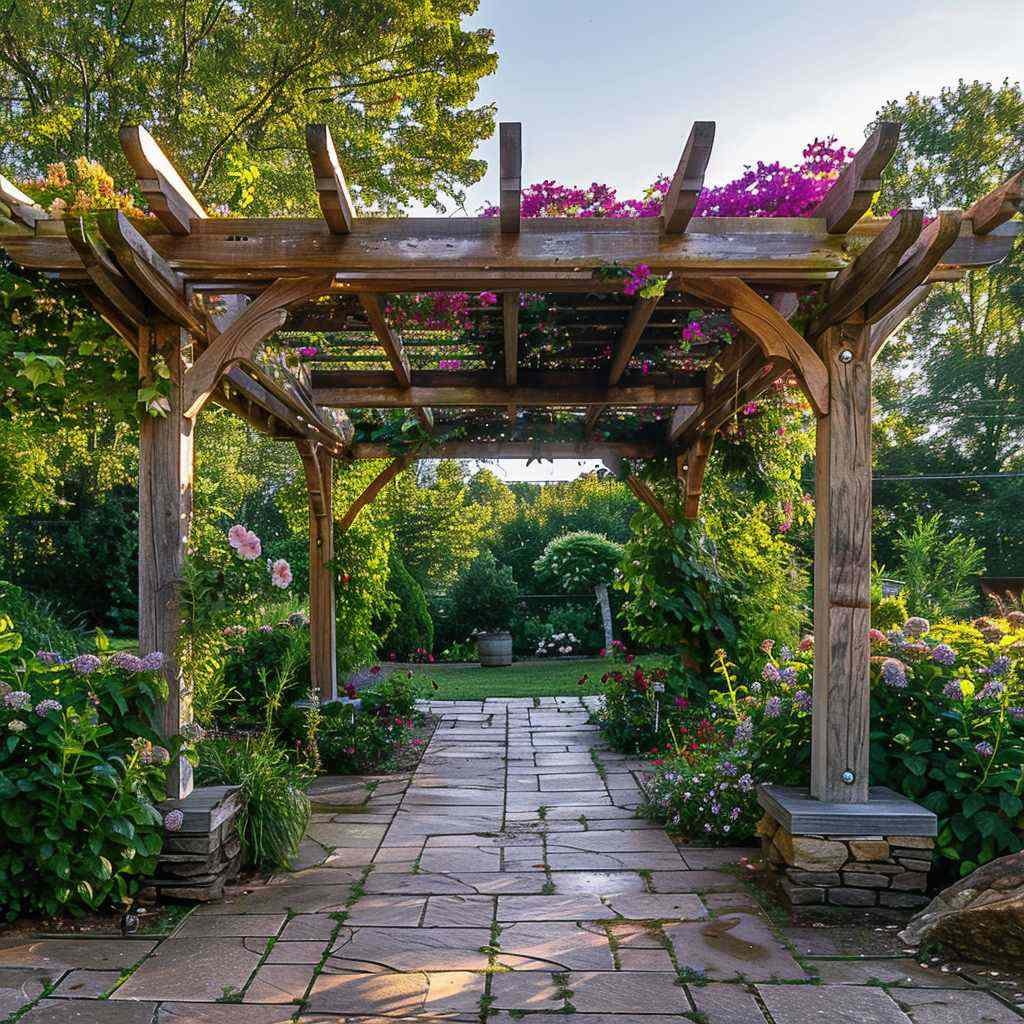
When building a pergola, safety should be your top priority. Taking a few steps to ensure your well-being can make the process much smoother and accident-free.
Safety Gear
Always wear appropriate safety gear.
Gloves protect your hands from splinters and sharp edges.
Goggles shield your eyes from dust and debris.
Strong, reliable footwear with good grip prevents slips and provides protection against falling objects.
Handling Tools Safely
Using power tools can be dangerous if not handled correctly. Read the manuals and follow all safety instructions. Keep tools sharp and clean to reduce the risk of accidents.
When lifting heavy materials, always lift with your legs, not your back, to prevent injuries.
DIY vs. Professional Help
Building a pergola can be a rewarding DIY project. Simple designs are often suitable for homeowners with basic carpentry skills. For more complex designs or if you’re unsure about your abilities, hiring a professional makes certain the job is done safely and correctly.
Remember: Safety is the most important part of your project. With the right precautions, you can build your pergola efficiently and enjoy your new outdoor space.
